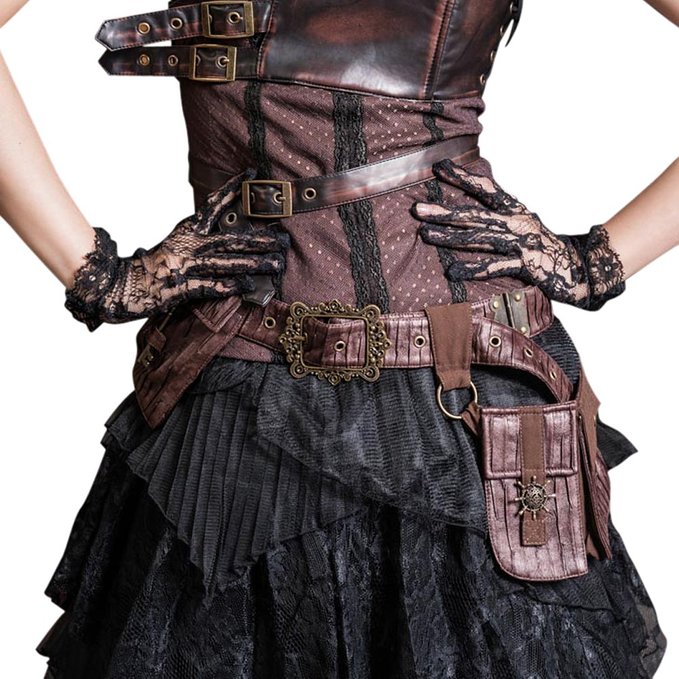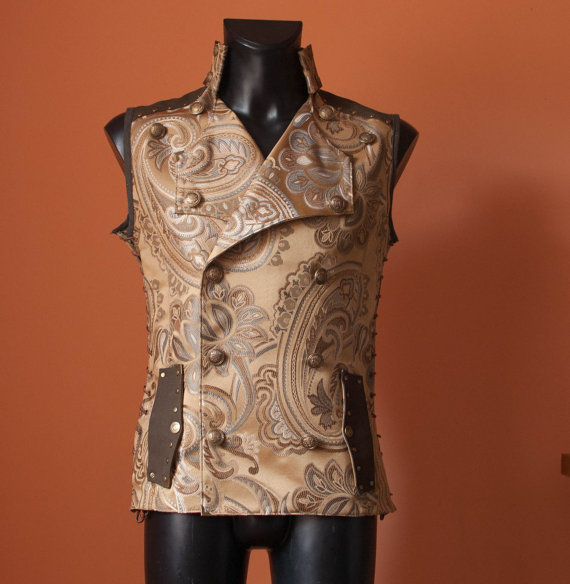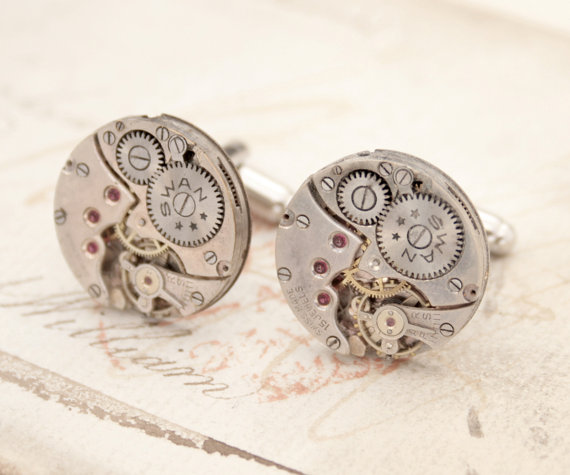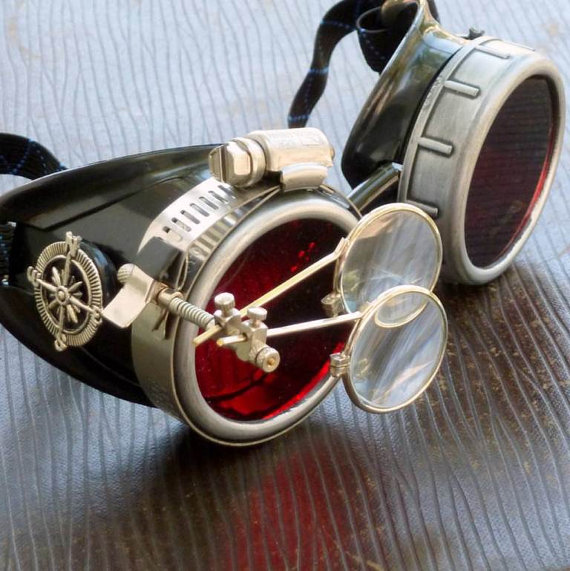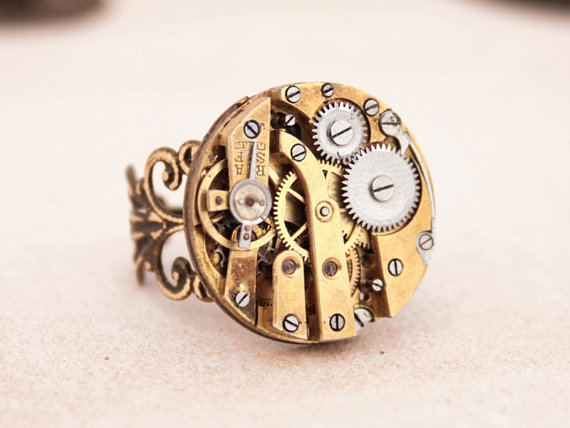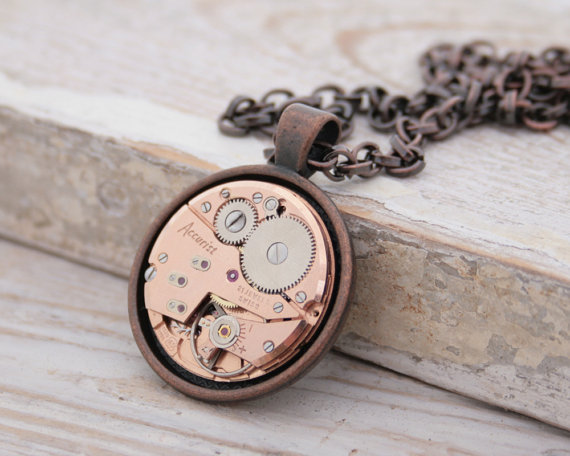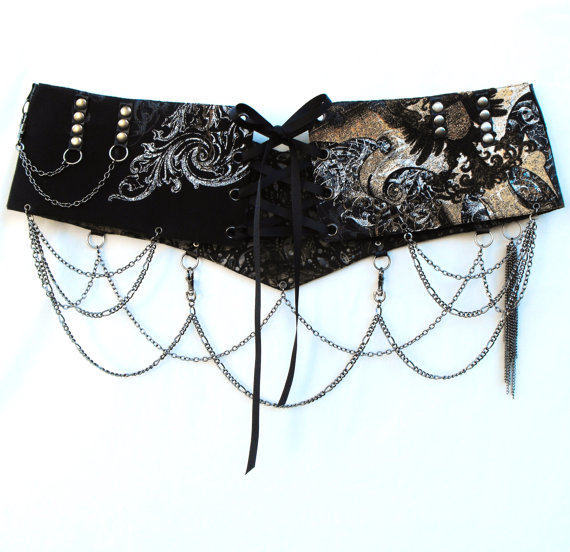Because Steampunk stems from a New Era, the Victorian one which brought major changes in morals, fashion and technology. Let’s see what happened in that New Era and how does it relate to our Steampunk fun.
In morals and etiquette, Victorian strict social conduct dictated that the clothing of the man should be serious, which we may call today stiff or business like, and that of the women be such that it covers the whole body, which we would classify today as scandalously boring. The length of the dresses was to be longer as a girl would advance from four to teenage age; oh well, the word is upside down today, on that account. Even the legs of the pianos were covered with what was called pantalets, legs to which men are not attracted nowadays. And there was an etiquette even for going to the beach and swimming. Although some people were bathing in the nude (a habit well preserved up to the present times), a bathing “machine”, a cabin on wheels, was recommended to the ladies. While on the beach, the “machine” allowed for changing the clothing in privacy, further to be pushed in the water for the ladies to bathe in just another cover-all robe. Victorian manners also professed sexual restraint within and out of wedlock and even communication of emotion or sexual feelings was in bad taste. In our times, we reckon that emotions or sexual feelings are sometimes communicated in bad terms.
In fashion, since humans are tough cookies, sweet and sour, and when their nature interacts with economics and technology, ways around the prescribed morals develop. So, the women’s sexuality was actually highlighted by corsets restraining the waist while exaggerating the hips and bust. Moreover, the new industrially woven fabrics were stretchy and wrapped the body like a glove. The trims and lace were cheaper to add as embellishments and the new dies enriched the spectrum of color coordination. On the men’s side, the waistcoats, vests, sashes around the waist and the smoking jackets were still present from the pre-Victorian era.
But more importantly for our subject is the military clothing, which evolves to better support mobility and weather conditions. The short close-fitting coat with tails is replaced by a double breasted French inspired tunic or the doublet, a snug-fitting buttoned jacket design inherited from past centuries. Cross hip belts and shoulder straps impeding on movement are replaced by pouches suspended on a waist belt. On the head quarters of the military men, the stovepipe hat is gradually replaced first by the shako (originally the Hungarian hussar) then by the lighter French kepi, Prussian pickelhaube and last but not least pith helmet. The latter stood the test of the time and it is still worn by the custodian police in London and the ceremonial unit of the Toronto Police Chief, to name just a couple. In terms or weaponry, the British army endowment evolves from muzzle-loading flintlock to a bolt action one and further the Lee–Metford rifle which enabled the use of the smokeless powder, instead of the black one which fumed a lot, thus reveling the shooter’s position. Since we are not experts on weapons we’ll show here some designs of that time, which graphically could inspire the steampunk fashion. We also found amusing the diversity and evolution of the helmets in general and that of the diving one in particular. The functionality of the diving helmet evolves together with the number of the bolts, from no bolts, to two to four, then six, eight, or 12 to secure it to the diving suit.
But the Industrial Revolution, fueled by inventions from the whole Europe and a fertile economic environment in North America, is actually the one that had the greatest impact on steampunk fashion. The extensive use in society of “machines”, some of them invented in the Victorian and further Edwardian Eras, ranged from sawing machines, industrial fabric looms, steam engine locomotives, electrical trams, bicycles, computing machines, flying or floating “apparatus”, diving equipment, telephone, wireless radio, all loaded with gears, chains, springs, electrical wires, lamps…and magic. Back to other steampunk artifacts, the goggle glasses, not to be confounded with googles glasses (although we see a merging potential [citation needed :)] here), come from the magnifying needs of the minutiae clockwork and eye protection needs for metal welding. The development of the later actually started in Russia and Poland and was further developed in America, to become extensively used beginning in the early 90’s. But talking about the joining metals, let us not forget about the pre-welding era of the rivets nuts and bolts, all steampunk staples nowadays.
Last but not least, steampunk is woven into the fabric of science-fiction literature and illustration. The machines and adventures described in the notable books of H. G. Wells and Jules Verne in the Industrial Revolution era, and recent sci-fi stories, books, illustrations and movies, offer a vision of the reality extending in alternative history, anachronistic technologies and futuristic or retro-futuristic worlds.
The “steampunk” term was coined only 25 years ago together with the cyberpunk one, the latter owed to Charles Babbage Analytical Machine; Ada Lovelace, his disciple, described it as “…that … Analytical Machine [which] weaves algebraic patterns just as the Jaquard loom weaves flowers and trees.” 1)
The steampunk art, fantasies and aesthetic design approach to technology and fashion pay tribute to human creativity. And that was our point, actually an overwhelming number of them, in suggesting a creative Steampunk New Year Masquerade Party. Be inspired by these two notable short animated movies “The Mysterious Explorations of Jasper Morello” and award winning Sci-Fi Short Film “Abiogenesis” – by Richard Mans and enjoy books, including the 2011 album of artwork and notable artists Steampunk, “The Art of Victorian Futurism” and “Steampunk Jewelry”. Read the books, watch the movies and be Kurious to discover more and enjoy your own creativity; that’s where the steampunk steam power comes from.
Did we forget to mention anything? More likely, because there is so much more about Steampunk…
Happy New Era!
1) David Lyndsay, “Madness in the Making”

